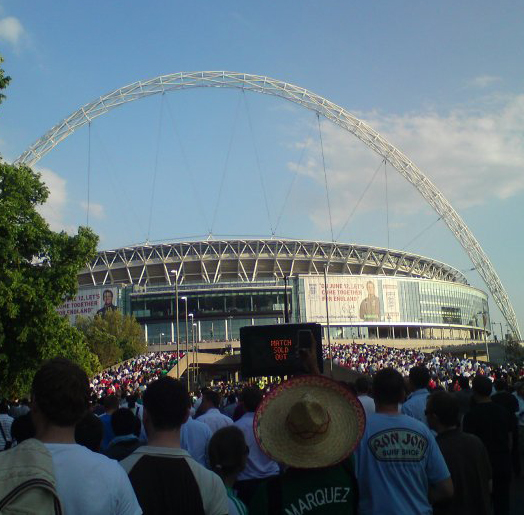Whether it’s a stadium gig, concert, football match or celebration, when pedestrians mass in one place, a crowd is created. Unfortunately for the individuals who make up a crowd, being a part of one can be extremely dangerous. A crowd can cause suffocation and trampling – but surprisingly, it’s the calmer crowds that cause the most problems. A group of people moving at once becomes a fluid that can crush people’s lungs or throw them into the air. Oasys Software, a technology business in the UK, provides MassMotion software to analyse crowd management and pedestrian flow so that architects can design safer environments.
UK event organisers are legally required to do their best to ensure the safety of visiting crowds. The actual dangers listed by the UK Government are:
•Crushing between people;
•Crushing against fixed structures such as barriers;
•Trampling;
•Surging, swaying or rushing;
•Aggressive behaviour; and
•Dangerous behaviour such as climbing on equipment or throwing objects.
The actual dangers in crowds
Trampling is actually rarely the main cause of death in crowd disasters. Instead, the mass movement of people can lead to forces of over 4500 Newtons, or 1,000lbs, being exerted. Steel railings can be bent by the force of a crowd. This kind of pressure causes compressive asphyxia, which is suffocation as a result of pressure to the chest. It is the leading cause of death in crowd disasters.
What causes this kind of crush? Surprisingly, it is rarely a ‘stampede’. Instead, it can be caused by a single trip or fall that causes a delay in a crowd that consists of 6 or more people per square meter. If there was enough room for people to run over one another like a stampede, there’d be enough room to get out of the way and avoid the intense chest pressure that builds from dense crowds. For example, the Ibrox disaster in 1971 killed 66 people in a crush that was started when someone, possibly a child on a father’s shoulders, fell on their way out of a stairway. This caused a chain reaction pile-up of people pushing from the rear to exit the stairwell, which led to compressive asphyxia.
One of the main causes is the group reaction to a perceived threat. This is not to be confused with panic, as it’s often a reasonable reaction. For instance, a 2003 crush in a Chicago nightclub was triggered by people attempting to avoid the pepper spray being used to break up a fight. Over 70 people were killed or injured. Unlike a panic, these situations usually involve cooperation and assistance.
More obviously linked to crowd accidents is the idea of a ‘craze’ – where the crowd rushes to attain a valued objective. In 1990, 1426 people were killed during a crush that occurred in a 500 metre long tunnel joining Mecca and the tent city of Mina, with people trying to get through to their pilgrimage. A lack of communication is also responsible for the accidents, as the ‘head’ and ‘body’ of a crowd can’t properly communicate. People in the rear of a crowd tend to press into those in front, even if those in front are in distress. Those in the back of a crowd have freer movement, while those in front end up immobile and trapped. The collapsing at the head of a crowd that starts to occur during these disasters gives the illusion of movement, so the back section keep pushing.
Examples
There are countless examples of crowd movement causing catastrophes, with many displaying signs of the factors we’ve covered above.
Lack of communication: In 1981, Greek football fans were killed when they tried to leave a match in Athens stadium, finding the gates locked. The rear of the crowd had no way of knowing this was the case and continued to press forward, causing 24 deaths.
‘Craze’ behaviour: in 1989, 96 people were killed and more than 170 injured at Hillsborough Stadium in Sheffield, England. A larger than expected fan base was trying to enter the stadium, which caused police to open gates to relieve crowd pressure. Instead, the crowd surged into the stadium, crushing fans into enclosed terraces. Reaction to perceived threat: A riot by English and Italian fans in 1985 at a European Cup Final in Brussels led to a flight by spectators trying to escape the violence, which led to 38 deaths by asphyxia. Over 437 people were injured.
Preventative measures
Actually preventing disasters in a crowd is exceptionally difficult, as the factors that contribute to the issue are complex. The density of a crowd is the first immediate problem to tackle. Setting a specific limit of guests can help alleviate the dangers associated with crowd density, but this can often be an unrealistic method at larger events such as religious gatherings.
Communication is another issue. Placing barriers to try and create movement paths can cause their own problems, as barriers may actually lead to accidents rather than prevent them. Simple barriers like rope or posts may be less dangerous. The use of stewards to help promote communication is a recommended measure as they can prevent the issue that comes from a communication breakdown between the head and body of a crowd.
For crowd surges, it’s vital to ensure proper access and exits are in place. A timed exit in a large event, where people from different levels exit at different times, is another popular prevention method. Technology is also helping fight against crowd crushing and other dangers. Using tools like MassMotion, those in charge of buildings or crowd control should first run simulations to test the stresses of pedestrian flow and crowds. These tools can help in evacuation planning, giving an unparalleled insight into the unique spectacle of crowd movement.
About the firm
Oasys Software is for structural, geotechnical and pedestrian modelling. Visit http://www.oasys-software.com/.
Sources:
http://www.bbc.co.uk/programmes/b00x53wd
http://www.gkstill.com/ExpertWitness/CrowdDisasters.html
http://www.crowdsafe.com/fruincauses.pdf .
Pictured: Wembley.










